27+ Sample Feedback Evaluations
-
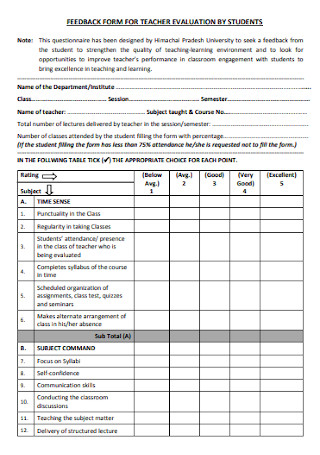
Feedback Form for Teacher Evaluation
download now -
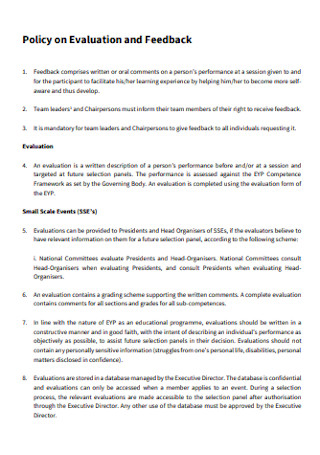
Policy on Evaluation and Feedback
download now -
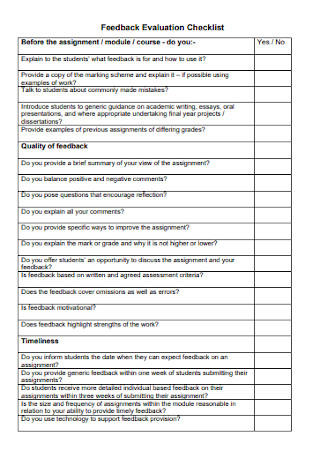
Feedback Evaluation Checklist
download now -
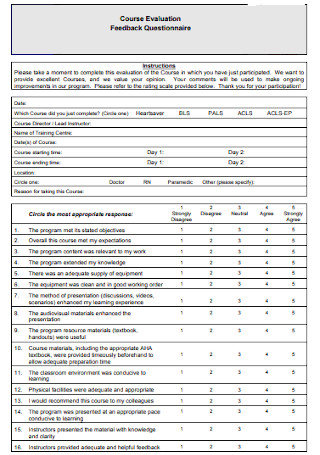
Feedback Evaluation Questionnaire
download now -

Formative Evaluation and Formative Feedback
download now -
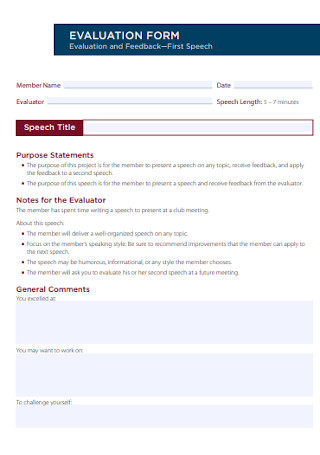
Simple Feedback Evaluation
download now -
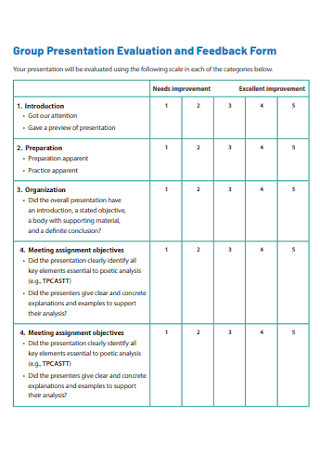
Group Presentation Evaluation and Feedback Form
download now -
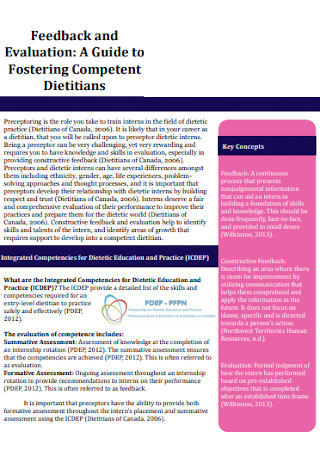
Sample Feedback and Evaluation
download now -
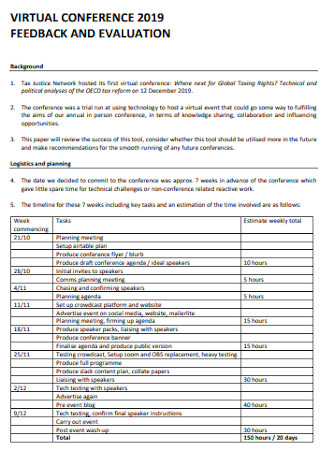
Virtual Conference Feedback Evaluation
download now -
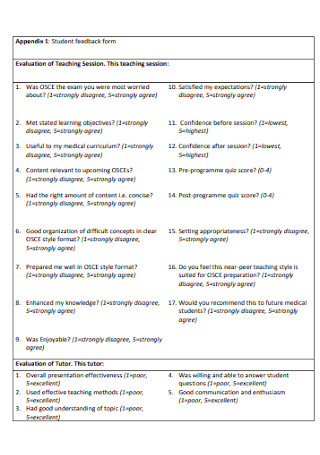
Student Feedback Evaluation
download now -
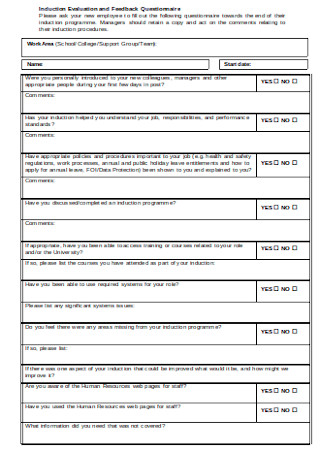
Induction Evaluation and Feedback Questionnaire
download now -
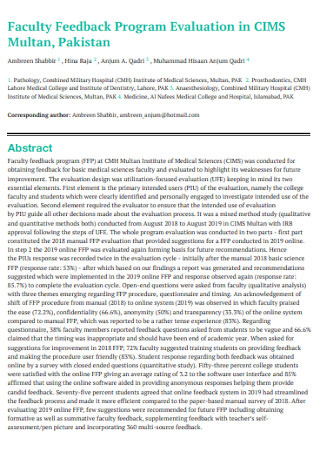
Faculty Feedback Program Evaluation
download now -
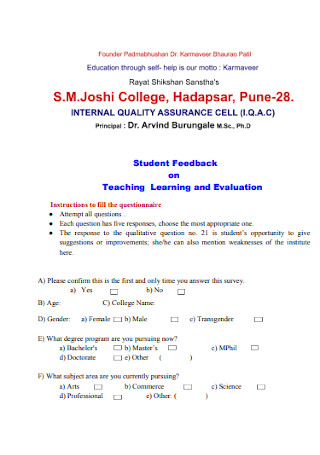
Teaching Learning Feedback Evaluation
download now -
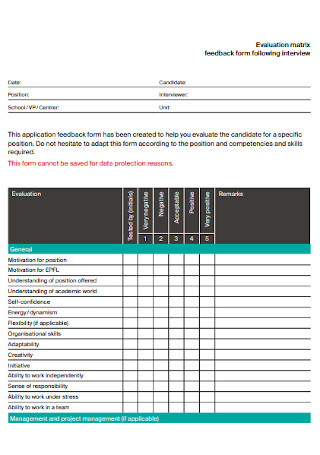
Interview Feedback Evaluation
download now -
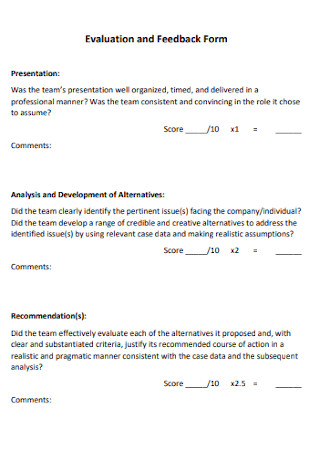
Evaluation and Feedback Form
download now -

Internship Feedback Evaluation
download now -

Supervisory Evaluation and Feedback
download now -
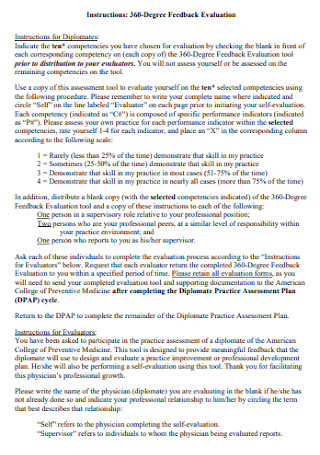
360-Degree Feedback Evaluation
download now -
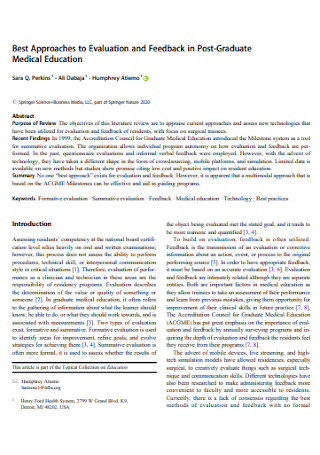
Evaluation and Feedback in Post-Graduate
download now -
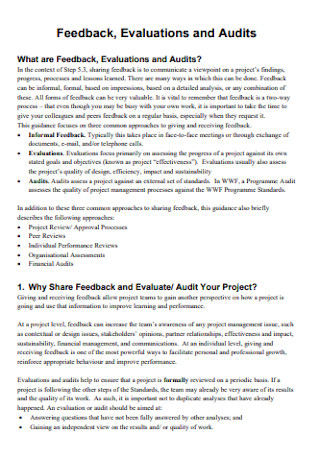
Feedback Evaluations and Audits
download now -
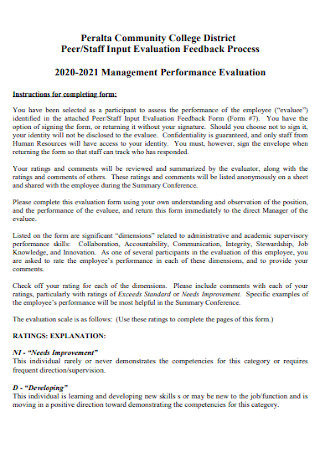
Staff Input Evaluation Feedback
download now -
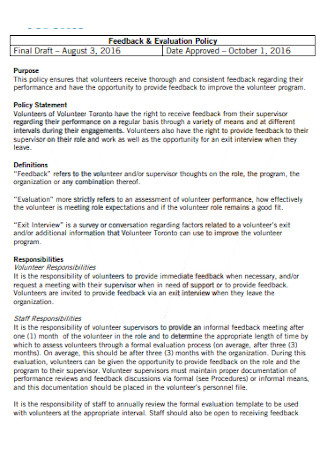
Feedback and Evaluation Policy Template
download now -
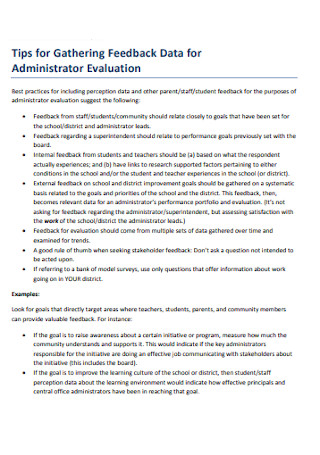
Feedback Data for Administrator Evaluation
download now -
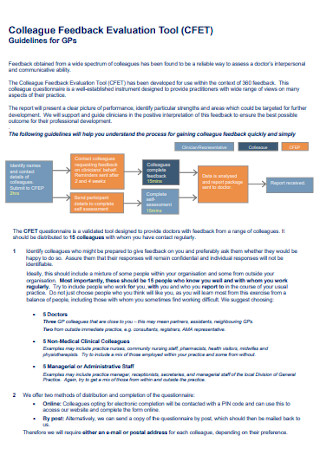
Colleague Feedback Evaluation Tool
download now -

Evaluation of Language Feedback
download now -
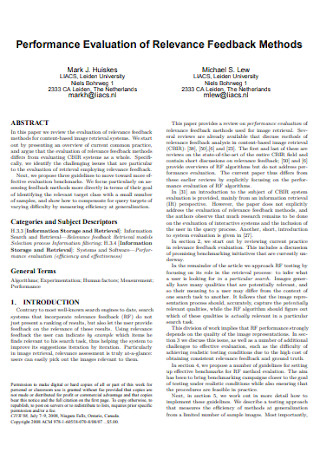
Performance Evaluation of Relevance Feedback
download now -
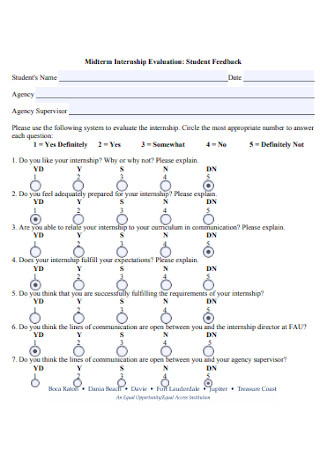
Internship Feedback Evaluation Template
download now -
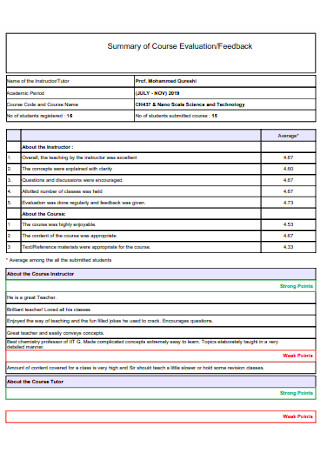
Summary of Course Feedback Evaluation
download now
FREE Feedback Evaluation s to Download
27+ Sample Feedback Evaluations
What Is Feedback Evaluation?
Benefits of Feedback Evaluation
Components of Feedback Evaluation
Tips to Prepare for a Performance Evaluation
How to Give Effective Feedback
FAQs
What is the best type of feedback?
How does feedback improve performance?
What are feedback skills?
What Is Feedback Evaluation?
Feedback evaluation is a reaction or information resulting from a person or group’s actions or behavior. Both positive and negative feedback is essential in learning and development. Feedback fosters a sense of involvement and interactivity and empowers students to assume responsibility for their education. Effective feedback informs students of their present level of performance and what they must do to attain a higher level. Companies that invest in regular employee feedback have turnover rates that are 14.9% lower than organizations whose employees do not receive feedback.
Benefits of Feedback Evaluation
Both positive and negative feedback is very beneficial. Feedback is critical information that will be utilized to make crucial decisions. Top-performing businesses are top-performing because they continually seek ways to improve their most excellent offerings. Continuous improvement is not merely a buzzword for high-performing organizations. Customers, clients, employees, suppliers, vendors, and other stakeholders have provided valuable feedback. Top-performing firms are not only adept at absorbing feedback, but they also actively seek it. And they are aware that feedback is only useful when it highlights shortcomings and strengths. Effective feedback benefits the giver, the recipient, and the organization. The following are five reasons why feedback is exceptionally crucial.
Components of Feedback Evaluation
Providing meaningful feedback is a complex process that involves expertise, experience, and finesse. If implemented effectively, effective feedback may significantly impact workplace productivity, employee engagement, and the bottom line. Managers must understand what constitutes good feedback to influence employees and enhance learning. In conclusion, managers must recognize that every employee has a distinct perspective and that this perspective influences every work encounter. Not only can providing feedback make it more successful for employees, but it also encourages goodwill and creates a teachable climate within your organization. For feedback to be beneficial, it should be:
Tips to Prepare for a Performance Evaluation
A performance review looks at how well you do your job and gives you a chance to show how valuable you are to your company. Your boss can give you both positive and negative feedback during an employee review, and it’s also an excellent chance to set goals and make plans for growth with your boss. Consider the following tips as you prepare for your performance review to get the most out of it:
1. Review your job description
Your job description should include your required competencies, duties, and objectives. These criteria might serve as the basis for your preparation. Consider how your achievements throughout the review period relate to your job description. When applying for a promotion, you should include the job description for the following level.
2. Review any performance notes or journals
Reviewing monthly status reports from the evaluation term might assist you in recalling performance highlights, obstacles, and any milestones you may have reached. If you have had a past performance review at your present business, it can be beneficial to examine it to gain insight into how you have progressed and grown since the last evaluation. If you maintain a performance log, review the past year. Look for recurring themes or patterns that reflect the information or abilities you’ve acquired or need to grow, the projects you’ve loved working on, and the demanding situations you’ve overcome. Consider establishing a work journal immediately if you have not been doing so. Keeping a detailed record of your victories, accomplishments, activities, and challenges enables you to record information while it is still fresh in your senses.
3. Feature achievements
Understanding your accomplishments during the evaluation period before the review procedure is crucial. While you should mention your actions, your supervisor will appreciate them more if you tie them to the company’s objectives. When outlining your achievements, you should also clarify how you accomplished them and their quantifiable influence on the organization. It is essential to document any obstacles that stopped you from achieving your objectives to be better assisted in the future. Include any training certifications or certificates of completion you’ve earned about your work.
4. Identify areas for improvement
By identifying areas for growth, you will be able to determine the skills, knowledge, and experience you need to continue progressing in your organization. A list of your improvement areas will provide the correct foundation for constructing a successful growth strategy with your manager.
5. Establish goals
Set your own goals before meeting with your manager to be proactive. Are there any credentials you’d like to obtain to further your career? Do you believe you need to work on developing any skills? Create a plan or a list of objectives to achieve. These objectives should be congruent with your firm or department, demonstrating that they match your progress with the corporation.
6. Be open to feedback
Openly communicate with your supervisor and take feedback. Being receptive to constructive criticism and feedback demonstrates to your manager that you are adaptable and willing to develop. Following your review, document details from your evaluation, such as stated strengths and challenges. Take note of any constructive criticism or good feedback your manager provides throughout the study. Be sure to keep any documentation from your supervisor to prepare for your following performance review.
How to Give Effective Feedback
Employee feedback is a highly potent instrument. It has the potential to build and develop the people in your organization, enhance levels of trust and communication, and establish ties between employees and management if delivered effectively. Unfortunately, input is sometimes disregarded or deleted to prevent discomfort. Here are five ways to assist managers and leaders provide frequent, effective, and result-oriented feedback to their employees.
1. Avoid offering unsolicited guidance
Only one-third of individuals believe that the feedback they receive is beneficial. This is because it is typically unsolicited, which can generate great stress for the recipient. If your direct report does not directly request feedback in person, ask if, when, and how they would prefer to receive it. By doing so, you can give your employee control and enhance the possibility that they will act on your feedback. Help your employees feel secure and comfortable enough to request input so that they may take charge of the plan.
2. Be specific
The employee feedback should be solution-focused, crystal clear, and concise. If you intend to provide corrective criticism, provide general comments such as “Your work has to be better” or “I wasn’t very impressed by those reports.” It would help if you did better than that” this can leave your employee perplexed and unsure of what area of their work requires improvement. Specify what you would like the person to do and provide assistance on how they might implement the feedback. For example, “I observed that you missed your past two deadlines. I want to work with you on your time management to guarantee that you’re not overcommitting and that you complete your duties on time.”
3. Bring a high level of empathy
Delivering feedback that reveals a significant lack of self-awareness requires more sensitivity. Like tearing off a scab, the sting of discovering such a profound chasm frequently evokes powerful emotions that are sometimes misinterpreted as defensiveness. If you bear the brunt of your colleague’s unpleasant conduct, be sure you can set aside your complaints to have the empathy necessary for this dialogue. Before approaching your coworker, be prepared to offer them the time and space they’ll need to process your critique. Remember not to perceive this as a sign of increased opposition to your message.
4. Do not wait for a quarterly evaluation
The most critical time for feedback from employees is right after an event. And employees are most engaged when they get feedback once a week. Problems that aren’t fixed may worsen, like a chain reaction. So when it’s time for your quarterly review, you’ll have to deal with many problems that should have been avoided if they had been brought up sooner. Another problem with saving feedback for the performance review is that problems will be forgotten by then, and it will be too delinquent in giving helpful feedback. Daily or weekly feedback will help you avoid the recency bias, which is based mainly on recent work and doesn’t happen often enough to fit with the employee’s workflow. This can make it more comfortable for everyone to track and analyze a colleague’s work.
5. Keep it private
Never criticize in public. For some, even praise is better presented in a private encounter. Specific individuals dislike being the center of attention. You might also consider providing written responses to employee comments. This can allow you to reflect and give a more considered response. Not only is feedback painful for the recipient, but it can also be uncomfortable for the sender. You can ease some of the underlying tension by relocating the event to a less formal setting.
FAQs
What is the best type of feedback?
Impact feedback is the most helpful type of first feedback since it tells a person of the consequences of their behavior without examining the specifics, presuming motivation, or assigning blame.
How does feedback improve performance?
It encourages people to improve their job performance by increasing their abilities, encouraging their efforts, and recognizing their achievements. If included in a management strategy and provided consistently, excellent feedback can reduce employee errors, improve performance, and promote workplace efficiency.
What are feedback skills?
Feedback is a method of learning for every member of an organization. It is a two-way process in which each attempts to gain something positive from the other’s contributions. It is all about mutual understanding, respecting one another’s viewpoints, and benefiting from one another’s experiences.
For many managers, providing feedback is more complicated than receiving it. There is a sense of guilt, and the talk can be tricky since few individuals appreciate pointing out another person’s weaknesses. Observing these guidelines can facilitate this. Because employee feedback may transform a good employee into an exceptional one, don’t be hesitant to provide comments you believe in; be sure to do so effectively.
